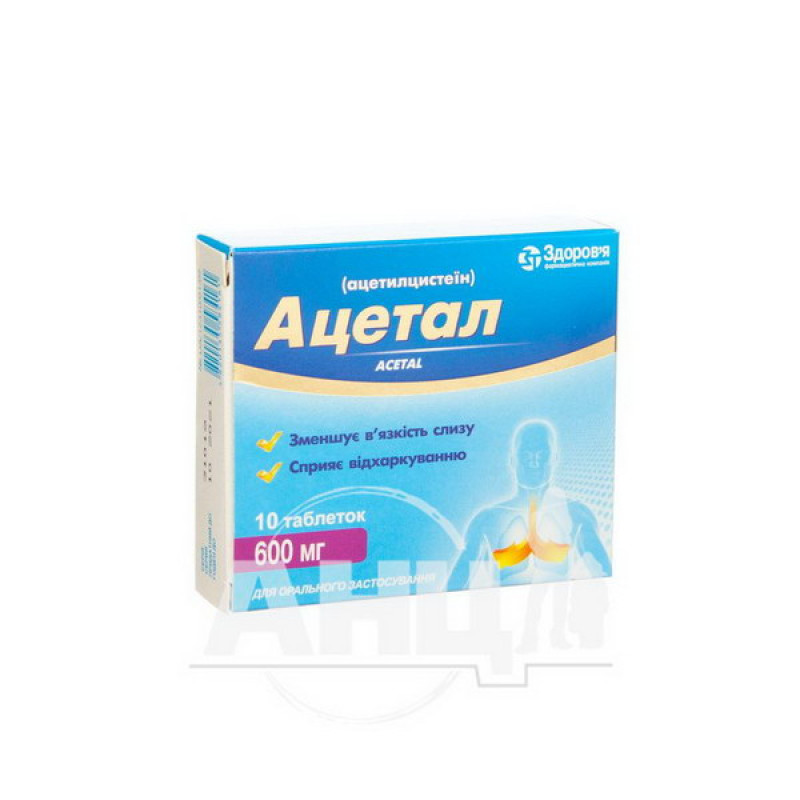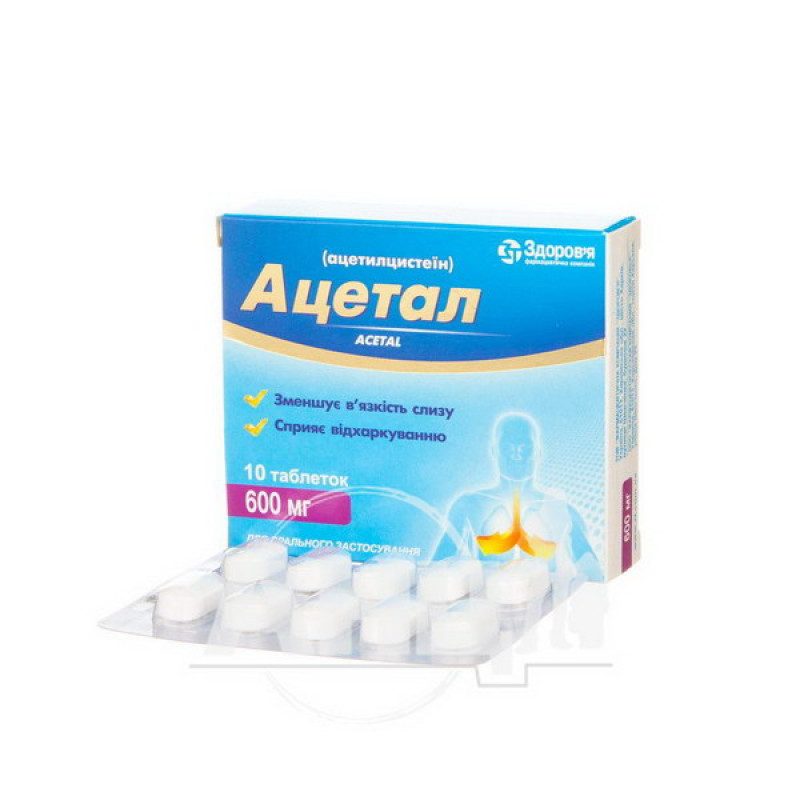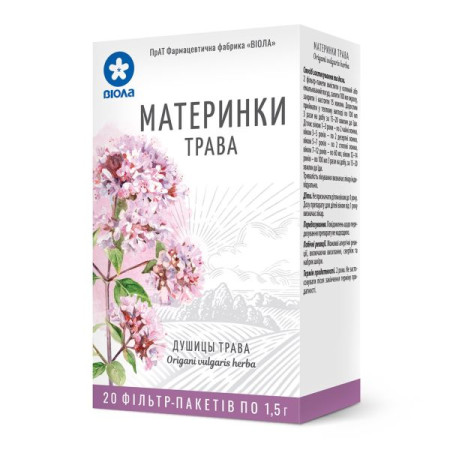Acetal tablets 600 mg blister No. 10

Pharmacological properties
Acetylcysteine ((r) -2-acetamide-3-mercaptopropanoic acid) is a bronchosecretory, mucolytic and expectorant with moderate anti-inflammatory activity. Acetylcysteine thins sputum, increases its volume, facilitates its discharge, and promotes expectoration. The mechanism of action is due to the ability of its sulfhydryl groups to break the disulfide bonds of acidic mucopolysaccharides of sputum, which leads to a decrease in mucus viscosity. It has a stimulating effect on mucous cells, the secretion of which lyses fibrin. The drug also has anti-inflammatory activity due to the inhibition of free radical processes, which is a beneficial pathogenetic link in the development of acute and chronic inflammation in the tissues of the respiratory tract. Acetylcysteine promotes the synthesis of glutathione, the most important link in the system of intracellular antioxidant protection, and also promotes detoxification processes.
When taken orally, it is well absorbed in the digestive tract. During the first pass through the liver, it is deacetylated to form cysteine, which causes a relatively low bioavailability of acetylcysteine (about 10%). The maximum concentration in blood plasma is reached 1-3 hours after administration. Binding to plasma proteins is about 50%. Penetrates the placental barrier. The half-life from blood plasma is 1 hour, with cirrhosis of the liver its duration increases to 8 hours. Metabolized in the liver. It is excreted from the body mainly by the kidneys in the form of inactive metabolites (inorganic sulfates, diacetylcysteine), a small part is eliminated unchanged through the intestines.
Indication
Respiratory diseases and conditions accompanied by the formation of viscous secretions: acute and chronic bronchitis, tracheitis due to bacterial or viral infection, pneumonia, bronchiectasis, asthma, atelectasis due to bronchial obstruction by mucous plug, cystic fibrosis (as part of combination therapy), rhinitis, sinusitis. Also used to remove viscous secretions from the respiratory tract in patients after injuries and surgeries. As an antidote for paracetamol poisoning.
Application
The drug is taken orally after meals. The contents of one sachet are dissolved in half a glass (approximately 100 ml) of drinking water immediately before taking.
For acute and chronic respiratory diseases: adults and adolescents over 14 years old - 200 mg of acetylcysteine 3 times a day or 600 mg 1 time a day; children aged 6-14 years old - 200 mg 2 times a day or 100 mg 3 times a day; children 2-5 years old - 100 mg 2-3 times a day; children under 2 years old and newborns (from the 10th day of life) - 50 mg 2-3 times a day.
For cystic fibrosis: patients with a body weight of more than 30 kg - up to 800 mg/day, children over 6 years old - 200 mg 3 times a day, children 2-6 years old - 100 mg 4 times a day, children aged 2 weeks to 2 months - 50 mg 2-3 times a day.
The course of treatment usually ranges from 5-7 days (for acute diseases) to several weeks (for chronic diseases).
Contraindication
Gastric and duodenal ulcer in the acute phase, hemoptysis, pulmonary hemorrhage, liver disease, pregnancy, hypersensitivity to the components of the drug.
Side effects
Heartburn, nausea, vomiting, diarrhea, feeling of full stomach, hives.
Special instructions
The use of the drug in newborns and children under 1 year of age is possible only under the supervision of a doctor. It is prescribed with caution in cases of BA, kidney and adrenal gland diseases. When used in persons with BA, it is necessary to ensure sputum drainage.
The mucolytic effect is enhanced by additional fluid intake.
Use in purulent bronchitis and cystic fibrosis must be combined with active sputum evacuation, in obstructive bronchitis (with caution) - with the use of bronchodilators.
Acetylcysteine penetrates into breast milk, therefore its use during breastfeeding is possible only in cases where the expected benefit to the mother outweighs the potential risk to the child.
Interactions
Concomitant use with drugs that suppress the cough center is not recommended due to the possible risk of sputum stagnation due to suppression of the cough reflex. The drug enhances (mutually) the effect of bronchodilators.
Reduces the absorption of penicillins, cephalosporins, tetracyclines (the interval between doses should be at least 2 hours).
The drug may enhance the vasodilating effect of nitroglycerin. Reduces the hepatotoxicity of paracetamol and phenacetin.
Overdose
No serious and dangerous side effects have been identified in case of an overdose of the drug.
Storage conditions
In a dry place, protected from light, at a temperature of 15-25 °C.
There are no reviews for this product.
There are no reviews for this product, be the first to leave your review.
No questions about this product, be the first and ask your question.
















